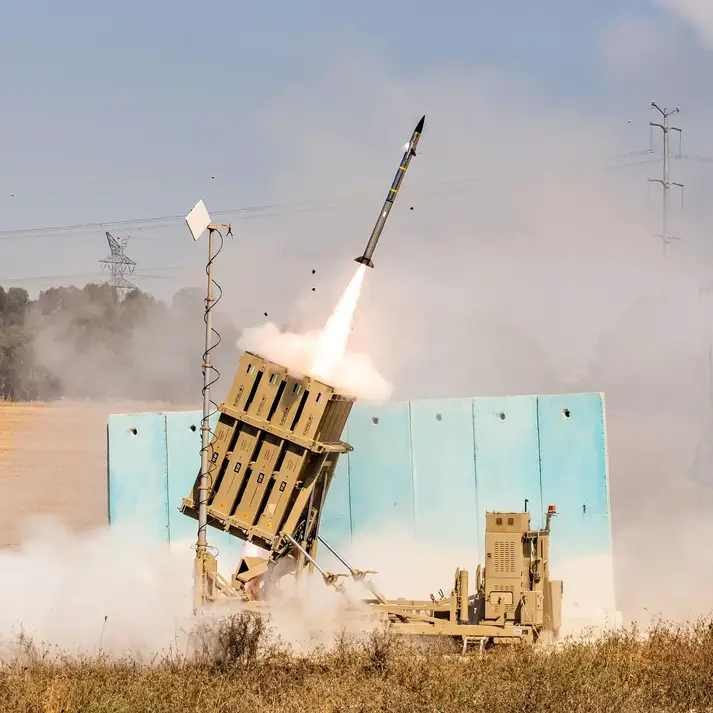Why does the Iron Dome fail in Israel?
Why does the Iron Dome fail in Israel? Why Hamas could overwhelm and pass the system that should protect Israel against any aerial threat? We might say that it's easy to go through the Iron Dome or any other missile shield. If the attacker has more missiles than the defender. It's impossible to destroy all attackers. The Hamas attacks introduced problems with modern air defense. High-tech weapons and ineffective against mass raids of dummy weapons. And one case is that there are too many attackers.
Because there are no missiles that can destroy all incomers. This is the problem of the missile mass raid. The attacker can use thousands of drones and missiles to attack. That forces the defender to react and shoot its AA missiles. And one drone tactic is that the attacker will shoot drones in a non-stop chain. That forces the defender to use its missiles.
"An Iron Dome launcher launching a missile. On October 7, 2023, Israel’s Iron Dome was overwhelmed by a massive missile attack from Hamas, showcasing a military asymmetry where a low-cost strategy defeated a high-tech defense. This incident underscores the need for affordable, scalable air defense solutions." (ScitechDaily.com/Iron Dome’s Vulnerability: How Hamas Pierced Israel’s Prized Air Defense Shield)The problem with the iron dome is that Hamas knows it. Drone attacks in Ukraine have shown that there is a need for some new types of AA weapons. Those weapons should have the capacity to shoot down incoming rockets, grenades, and drone swarms. If the system uses only missiles, the problem is that there is a limited number of ammunition in those systems.
Normally, targets are defended by AA missiles, and the CIWS (Close-In Weapon Systems) that are rapid-firing machine cannons. The rate of single-machine cannon fire is 3000 to 6000 or even more ammunition per minute. And those system's vulnerability is they use lots of ammunition. The most modern CIWS systems use lasers and other DEW (Directed Energy Weapons).
Above:) The DEW (Directed Energy Weapon) like laser rays could be the future of air defense. This is artis's impression of mobile system.
Laser, radio wave, and microwave-based systems have no limits in ammunition. But they require an electric supply. Lasers are effective against single ammunition. But things like swarms of free-flight rockets and especially grenade swarms require some other type of defender. The electromagnetic shield can destroy ammunition before it reaches targets.
There are plans for many versions of the power shields that can defend cities against bombs and missiles. One of the first versions was the system that was based on Tesla coils. The network of electric arcs that are created between Tesla coils over the area will destroy bombs before they hit their target.
One version of the defender is a fast-rotating laser ray or laser whips and microwave pins.
The laser whip that rotates in the line between the target and incoming rockets can destroy each of them. The idea is that the laser ray moves very fast above the target like a whip and that system destroys all kinetic ammunition. The idea is that only aiming optics must rotate. The system can be installed in any tower or airship. In the last case, the light cable transports laser light to an airship that hovers over the target area. Microwaves can create a pin that can destroy multiple incoming dummy targets.
The radio wave-based systems create electric arcs in the air or their transmission power is so high that it destroys incoming ammunition's electronics. The EMP systems are effective against drones and drone swarms. But they are ineffective against dummy free-flight rockets. And that thing means that guided missiles require some other systems to use against the incoming dummy objects.





No comments:
Post a Comment
Note: Only a member of this blog may post a comment.